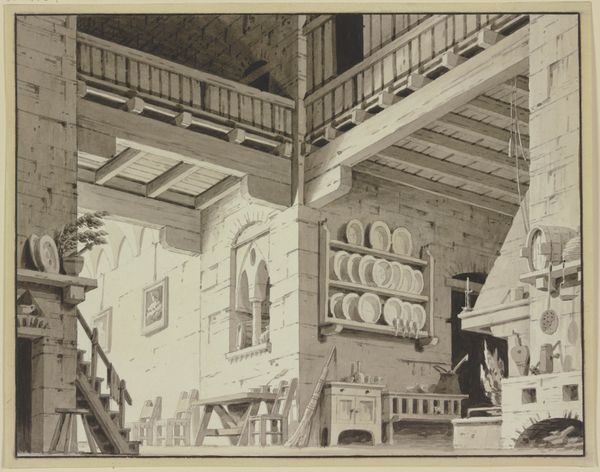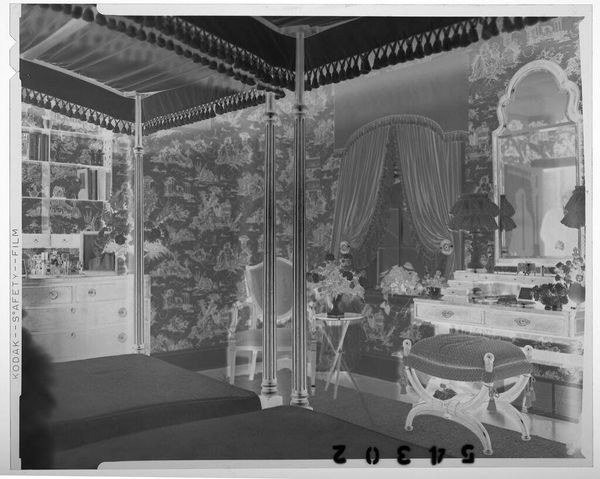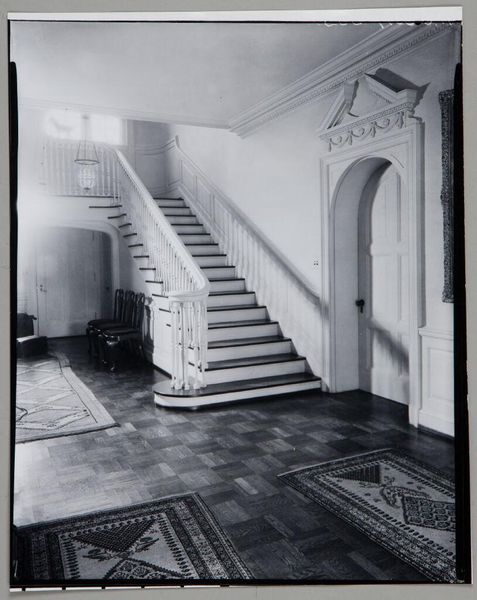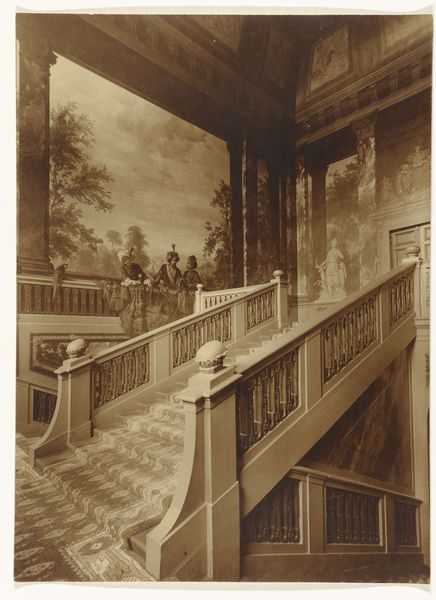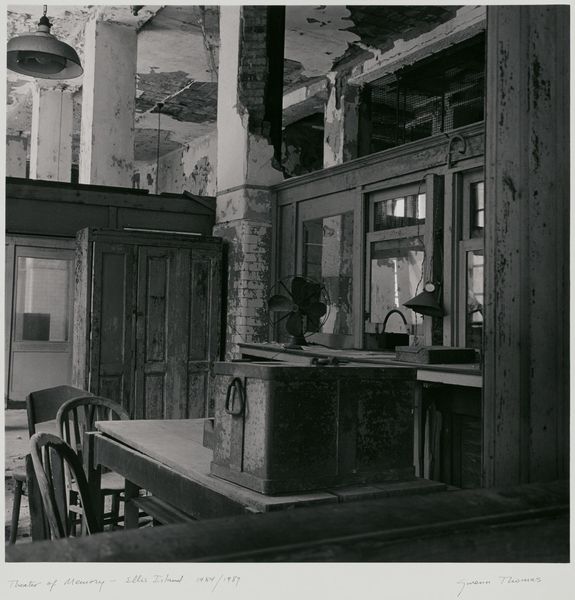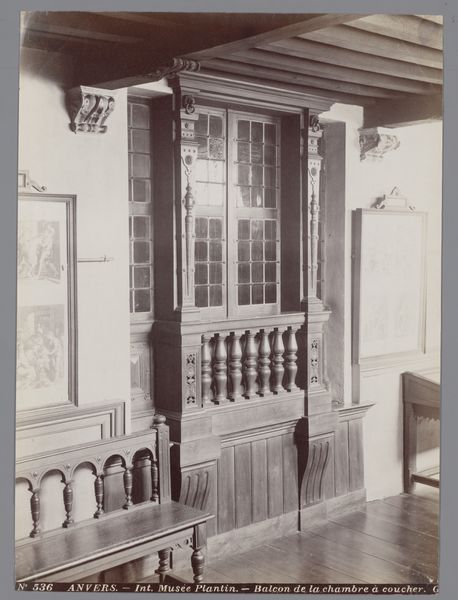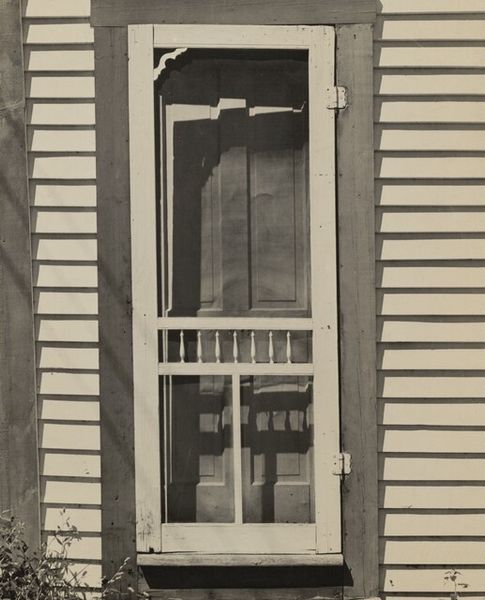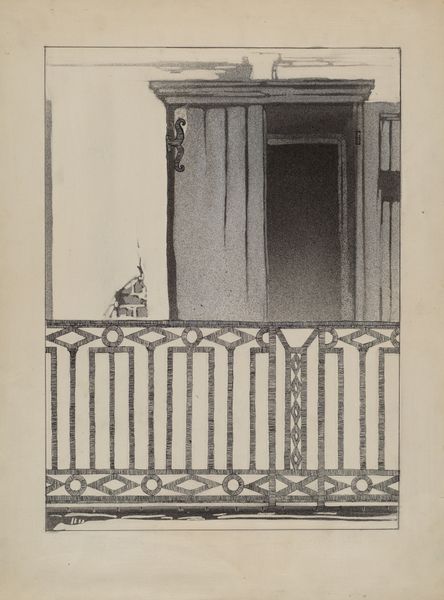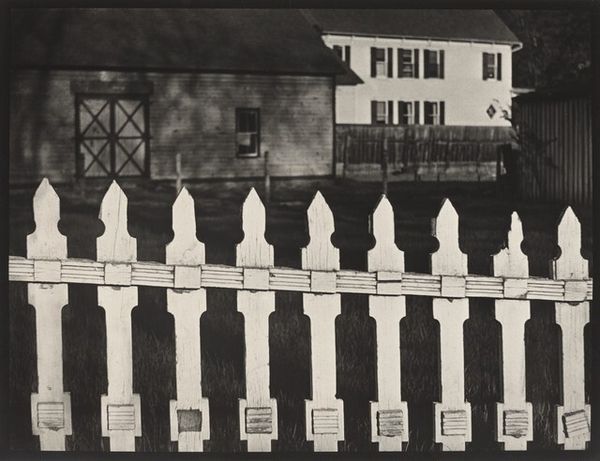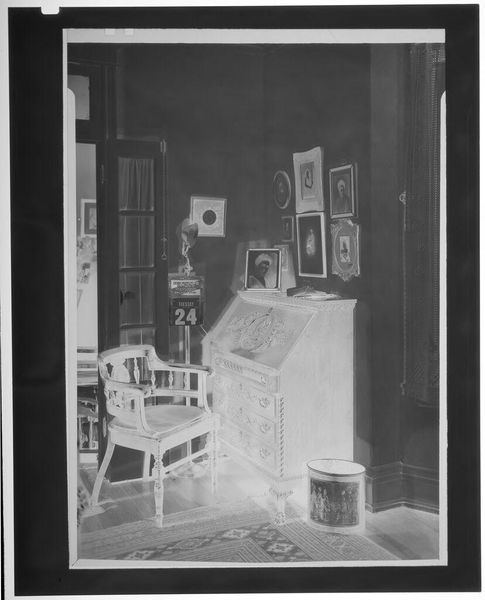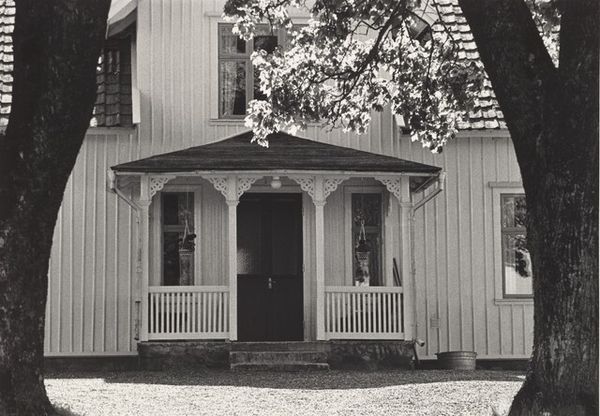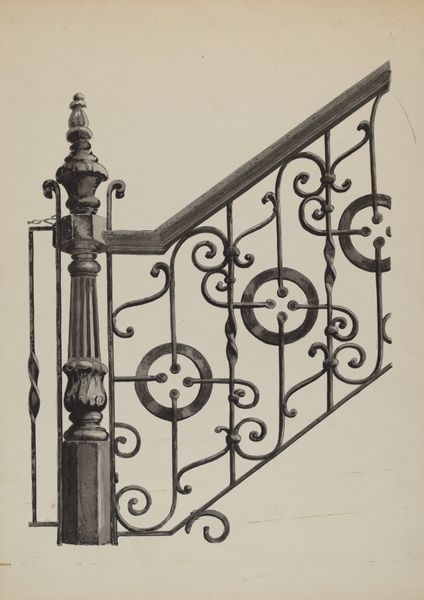
Dimensions: image: 28.2 x 21.5 cm (11 1/8 x 8 7/16 in.) mount: 50.2 x 37.5 cm (19 3/4 x 14 3/4 in.)
Copyright: National Gallery of Art: CC0 1.0
Curator: Immediately, I sense a feeling of quiet observation. There is a gentle stillness in this scene, like a moment held in suspension. Editor: This black and white photograph, titled "Maine Pump, 1933," by Walker Evans captures an unassuming architectural scene, perhaps taken anytime between 1933 and 1974, given its dating. Evans often turned his lens toward vernacular American subjects. It is not just a mere recording but also an examination of our relationship to these functional yet subtly decorative objects. Curator: It is like Evans elevated something ordinary and easy to dismiss, perhaps forgotten now, into something strangely poetic. The light, the shadow... the little flourish above the door that repeats at the top as the roof comes to a point... it looks like it may have been someone's humble, private declaration of beauty. Editor: Indeed. Focusing on that doorway and well pump allows us to consider rural spaces and the historical reliance on local resources. Consider how ideas about self-sufficiency have shifted over time, as well as how photographic representations of "American" subjects shaped national identity. Also, I notice how the functional objects mimic architectural details; there is an intention of visual unity, wouldn't you say? Curator: Exactly. They are connected, that's why you do not really see a contrast. A practical solution—a water source—elevated, considered, and even mirrored in the home's design. This wasn't merely a necessity; it was interwoven into the life and visual story of the people who inhabited this space. It suggests resilience, ingenuity, and a quiet sort of artistry. Editor: So perhaps Evans is quietly documenting not just an aesthetic or design, but the material realities that form the foundation of lives and community? There is the well, the doorway. It could almost serve as a still life of the intersectional networks supporting human experience. Curator: Precisely. Evans captured not just a structure, but an unspoken narrative—a testament to a bygone era when necessity and art weren't so distant. Editor: It certainly leaves you contemplating those connections, especially as our society reckons with these dynamics through resource availability and the definition of community today. Thank you for that perspective, it reframed how I see the picture, truly!
Comments
No comments
Be the first to comment and join the conversation on the ultimate creative platform.

